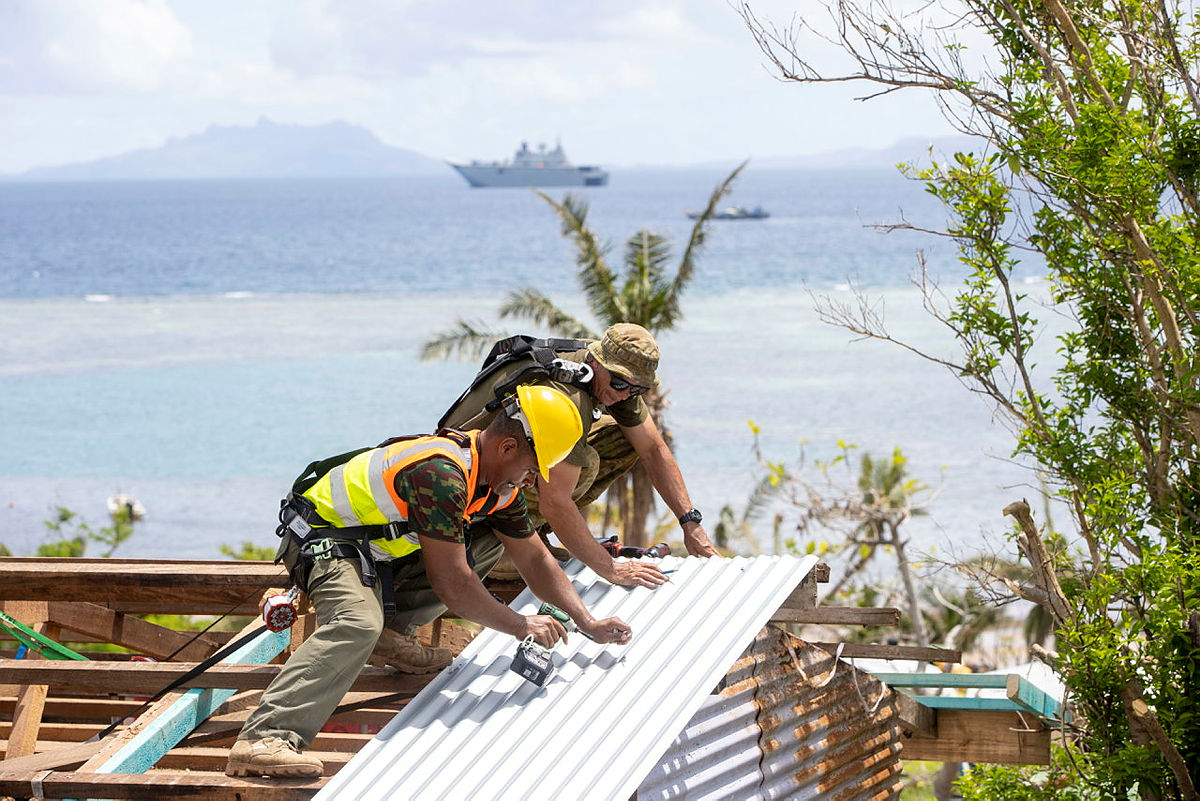
Scientists have long predicted that climate change will increase the frequency and intensity of extreme weather events, like tropical cyclones, in the Asia–Pacific region. Now, with four decades of observable data, it’s clear that the problem is no longer a hypothetical but a formidable challenge requiring a complex array of strategic policy decisions to support national and regional resilience.
If the 2019–20 bushfire and cyclone seasons and Covid-19 are anything to go by, the Australian Defence Force is going to be central to many, if not all, of the government’s national disaster response and resilience policies. This increased domestic response will have implications for the ADF’s ability to meet future demands for humanitarian assistance and disaster relief (HADR). Collectively, these increasing domestic and international disaster response responsibilities will inevitably divert ADF capability from its core task of protecting Australia and its national interests.
More intense and destructive cyclones will hit the country, endangering lives, causing damage across northern Australia and spreading progressively further south. Just last night, category 3 ex-Tropical Cyclone Seroja made landfall on Western Australia’s mid-west coast, quickly travelling southeast and leaving a trail of destruction. WA Premier Mark McGowan warned it would be ‘like nothing we have seen before in decades’.
Then there’s the risk of more destructive cyclones hitting the South Pacific more frequently. A study by scientists from the US government’s National Oceanic and Atmospheric Administration found that from 1979 to 2017, the proportion of major cyclones to all recorded cyclones in the South Pacific had increased by more than 30% and, globally, the probability of a cyclone reaching wind speeds greater than 185 kilometres per hour rose by 15%. Australia has historically provided extensive HADR in the Pacific, and more frequent and more intense cyclones will bring greater demands for these resources.
The ADF’s HADR responses have become integral to regional governments’ resilience and recovery calculus. Understandably, then, the ADF’s HADR role plays an important part in building diplomatic relationships with our Pacific neighbours.
This was demonstrated recently when, just as HMAS Adelaide returned from Operation Fiji Assist, a three-week recovery mission following Tropical Cyclone Yasa, Tropical Cyclone Ana wreaked havoc, and a third, albeit more minor, cyclone followed just days later. HADR missions are costly and resource-intensive. Operation Fiji Assist, for example, delivered $4.5 million of humanitarian relief supplies and involved more than 600 ADF personnel, who helped rebuild and repair 32 schools and distributed a total of 165 tonnes of aid and 918,000 litres of clean drinking water.
More significant, though, was the operation’s extensive use of key ADF capabilities. It involved two P-8A Poseidon aerial surveillance missions, five C-17 flights delivering humanitarian supplies, and a weeks-long deployment of HMAS Adelaide, one of Australia’s two Canberra-class landing helicopter dock ships (the other has only just completed a months-long maintenance period in Sydney).
Yet Australia should not refrain from conducting HADR missions. The ADF has always responded to HADR calls from the Pacific and now has increased capability in this area, with HADR preparedness a key consideration in several major ADF acquisitions in recent years.
However, the problem for the ADF is one of capacity not capability.
What happens when a particularly intense cyclone hits one of our Pacific island neighbours and key elements of our navy and air force are deployed in the South China Sea or are weeks away engaged in multilateral exercises? Or what happens when cyclones strike Australia and our neighbours simultaneously or in quick succession?
The ADF has surely considered scenarios like these, and when faced with concurrent competing priorities would weigh the risks and commitments of any number of proposed actions and make a decision. But these decisions are set to become more difficult, more resource-intensive and more high-stakes.
A strategic rethink is needed in how Australia supports our Pacific neighbours to prepare for and recover from cyclones before they occur, and this should happen before HADR demand outpaces the ADF’s capacity to assist.
Following the final report of the Royal Commission into National Disaster Arrangements and the government’s response last year, Australia needs to extend this thinking to its international disaster-management strategies, specifically those focused on regional aid and assistance. The government should start by developing a capacity within the Department of the Prime Minister and Cabinet to independently assess the threats posed by climate-related disasters to Australia and the region. This information should be used to better guide Australia’s aid priorities towards disaster preparedness and resilience for our Pacific partners, and form an initial assessment of the ADF’s current and future HADR demands.
Defence also needs to re-evaluate how it prioritises HADR operations and consider a few strategic investments to support a likely increase in operational demand, both domestically and regionally.
In the short term, we need to increase our strategic reserves of food, water, fuel, emergency shelter, medical resources and other critical HADR supplies. These reserves should be held in hubs where they can be readily available for both domestic and international disaster relief. Darwin would be well placed to distribute supplies to Asia, while Townsville would complement Brisbane well in supplying the Pacific.
In the medium term, Defence needs to invest in the ADF’s HADR preparedness. The ADF has a history of being caught with limited options during domestic and international disasters, like having just one or none of its amphibious ships available during cyclone seasons. To avoid these pressures on capabilities and personnel, Defence should consider expanding the ADF’s amphibious fleet by investing in an additional landing helicopter dock and assigning a dedicated part of the reserve or regular forces to respond to HADR requests, as recommended by a 2018 Senate inquiry.
Whatever changes are made, they need to be made soon. If the ADF doesn’t invest now to meet future demand for HADR operations, it could be caught short, with potentially disastrous consequences for Australian lives and Australian interests.

